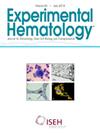血液老化的生物标志物--它们在小鼠和人类之间的可转移性如何?
IF 2.5
4区 医学
Q2 HEMATOLOGY
引用次数: 0
摘要
衰老会严重影响造血系统,降低其再生能力和应激后恢复平衡的能力。小鼠模型的寿命较短,而且能够探索遗传、治疗和环境对衰老的影响,因此在研究这一过程中具有非常重要的价值。然而,衰老的所有方面并非都能在物种间相互反映。这篇综述比较了小鼠和人类造血系统中的三个关键衰老生物标志物:髓样蛋白偏倚、端粒损耗和表观遗传时钟。髓系偏向以髓系细胞比例增加和淋巴细胞比例减少为标志,是小鼠的一个重要衰老标志,但在童年后的人类中却很少被观察到。相反,端粒长度在人类中是一个强有力的衰老生物标志物,而小鼠的端粒动态却有很大不同,因此端粒长度在小鼠系统中的可靠性较低。表观遗传时钟基于特定基因组区域的 DNA 甲基化变化,可精确估计小鼠和人类的实际年龄。值得注意的是,小鼠和人类的年龄相关区域出现在同源基因组位置。表观遗传时钟(取决于所使用的表观遗传特征)还能捕捉生物衰老的各个方面,为评估遗传和环境对衰老的影响提供了强有力的工具。总之,并非所有的血液衰老生物标志物都能在小鼠和人类之间转移。在使用小鼠模型推断人类衰老时,将重点放在在两种物种中观察到的衰老现象上可能会更有优势。总之,虽然小鼠模型提供了重要的见解,但选择适当的生物标志物对于将研究结果转化为人类衰老至关重要。本文章由计算机程序翻译,如有差异,请以英文原文为准。
Biomarkers for aging of blood – how transferable are they between mice and humans?
Aging significantly impacts the hematopoietic system, reducing its regenerative capacity and ability to restore homeostasis after stress. Mouse models have been invaluable in studying this process due to their shorter lifespan and the ability to explore genetic, treatment, and environmental influences on aging. However, not all aspects of aging are mirrored between species. This review compares three key aging biomarkers in the hematopoietic systems of mice and humans: myeloid bias, telomere attrition, and epigenetic clocks. Myeloid bias, marked by an increased fraction of myeloid cells and decreased lymphoid cells, is a significant aging marker in mice but is scarcely observed in humans after childhood. Conversely, telomere length is a robust aging biomarker in humans, whereas mice exhibit significantly different telomere dynamics, making telomere length less reliable in the murine system. Epigenetic clocks, based on DNA methylation changes at specific genomic regions, provide precise estimates of chronologic age in both mice and humans. Notably, age-associated regions in mice and humans occur at homologous genomic locations. Epigenetic clocks, depending on the epigenetic signatures used, also capture aspects of biological aging, offering powerful tools to assess genetic and environmental impacts on aging. Taken together, not all blood aging biomarkers are transferable between mice and humans. When using murine models to extrapolate human aging, it may be advantageous to focus on aging phenomena observed in both species. In conclusion, although mouse models offer significant insights, selecting appropriate biomarkers is crucial for translating findings to human aging.
求助全文
通过发布文献求助,成功后即可免费获取论文全文。
去求助
来源期刊

Experimental hematology
医学-血液学
CiteScore
5.30
自引率
0.00%
发文量
84
审稿时长
58 days
期刊介绍:
Experimental Hematology publishes new findings, methodologies, reviews and perspectives in all areas of hematology and immune cell formation on a monthly basis that may include Special Issues on particular topics of current interest. The overall goal is to report new insights into how normal blood cells are produced, how their production is normally regulated, mechanisms that contribute to hematological diseases and new approaches to their treatment. Specific topics may include relevant developmental and aging processes, stem cell biology, analyses of intrinsic and extrinsic regulatory mechanisms, in vitro behavior of primary cells, clonal tracking, molecular and omics analyses, metabolism, epigenetics, bioengineering approaches, studies in model organisms, novel clinical observations, transplantation biology and new therapeutic avenues.
 求助内容:
求助内容: 应助结果提醒方式:
应助结果提醒方式:


